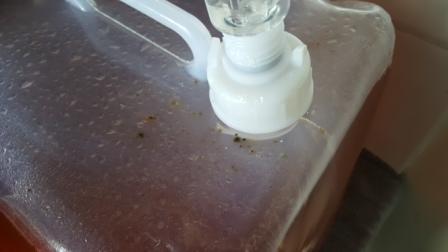My cider has been in primary for 2 ½ weeks, yeast has settled and is a beautifully clear golden colour. Im planning to bottle some and move some to secondary at the weekend.
I havent removed the airlocks for gravity/taste tests as Ive got a fair bit of head space. More details in this thread:
https://www.homebrewtalk.com/showthread.php?t=589782
Ive just noticed a few green spots on top of the fermenter that look distinctly like mould. Is it game over of am I going to be able to salvage this?

I havent removed the airlocks for gravity/taste tests as Ive got a fair bit of head space. More details in this thread:
https://www.homebrewtalk.com/showthread.php?t=589782
Ive just noticed a few green spots on top of the fermenter that look distinctly like mould. Is it game over of am I going to be able to salvage this?







































![Craft A Brew - Safale S-04 Dry Yeast - Fermentis - English Ale Dry Yeast - For English and American Ales and Hard Apple Ciders - Ingredients for Home Brewing - Beer Making Supplies - [1 Pack]](https://m.media-amazon.com/images/I/41fVGNh6JfL._SL500_.jpg)




















